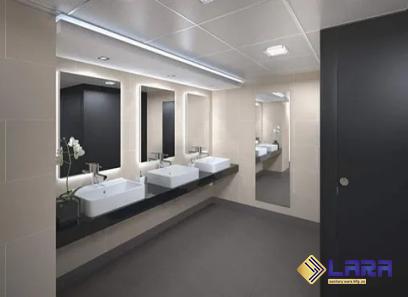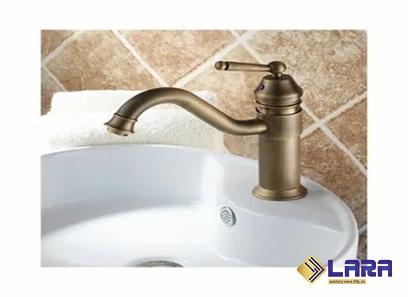Ensuring Accessibility for All Accessibility is a key aspect of any public space or business establishment. Ensuring that everyone, regardless of their physical abilities, can comfortably and conveniently use the facilities is a crucial consideration. One area where accessibility plays a significant role is in the design and installation of ADA bathroom toilets. The Americans with Disabilities Act (ADA) was enacted in 1990 to guarantee equal rights and opportunities for individuals with disabilities. It covers a wide range of areas, including building codes and design standards for restroom facilities.

.
 According to ADA guidelines, commercial establishments must provide at least one accessible toilet stall compliant with ADA regulations. So, what makes an ADA bathroom toilet different from a conventional one? Let’s delve into the specific guidelines that businesses must adhere to when designing and installing such toilets. 1. Dimensions: ADA compliant toilet stalls must have a minimum clear floor space of at least 60 inches in width. This provides enough space for a wheelchair user to comfortably maneuver into and out of the stall. The stall door must open outward to facilitate easy entry and exit, and its minimum width should be 32 inches.
According to ADA guidelines, commercial establishments must provide at least one accessible toilet stall compliant with ADA regulations. So, what makes an ADA bathroom toilet different from a conventional one? Let’s delve into the specific guidelines that businesses must adhere to when designing and installing such toilets. 1. Dimensions: ADA compliant toilet stalls must have a minimum clear floor space of at least 60 inches in width. This provides enough space for a wheelchair user to comfortably maneuver into and out of the stall. The stall door must open outward to facilitate easy entry and exit, and its minimum width should be 32 inches.
..
 2. Height: The height of an ADA toilet is crucial for individuals with mobility issues. The seat of an ADA compliant toilet must be between 17 and 19 inches above the finished floor level. This ensures that people of varying abilities can transfer onto and off the toilet seat easily. Additionally, grab bars must be installed on the side and rear walls to provide support and stability. 3. Flushing Mechanism: ADA toilets must have easy-to-operate flushing mechanisms. The force required to activate the flush should not exceed five pounds (22.2 N) to accommodate individuals with limited strength or mobility. Moreover, the flush controls must be positioned within reach, ensuring that people can operate them comfortably from a seated position. 4. Clear Space: Clear space plays a crucial role in ensuring accessibility within an ADA bathroom toilet stall. There must be enough room for a wheelchair user to approach the toilet from the front or side, as per personal preference. Properly placed grab bars and sufficient space to maneuver the wheelchair are essential for a hassle-free experience.
2. Height: The height of an ADA toilet is crucial for individuals with mobility issues. The seat of an ADA compliant toilet must be between 17 and 19 inches above the finished floor level. This ensures that people of varying abilities can transfer onto and off the toilet seat easily. Additionally, grab bars must be installed on the side and rear walls to provide support and stability. 3. Flushing Mechanism: ADA toilets must have easy-to-operate flushing mechanisms. The force required to activate the flush should not exceed five pounds (22.2 N) to accommodate individuals with limited strength or mobility. Moreover, the flush controls must be positioned within reach, ensuring that people can operate them comfortably from a seated position. 4. Clear Space: Clear space plays a crucial role in ensuring accessibility within an ADA bathroom toilet stall. There must be enough room for a wheelchair user to approach the toilet from the front or side, as per personal preference. Properly placed grab bars and sufficient space to maneuver the wheelchair are essential for a hassle-free experience.
…
 5. Signage: ADA compliant bathroom facilities must have clear signage to indicate the location of the accessible toilet stall. The signage must comply with ADA regulations, including appropriate symbols and raised characters for visually impaired individuals. By adhering to these guidelines, businesses can fulfill their legal obligations and create a welcoming environment for individuals with disabilities. ADA bathroom toilets are not only about meeting regulations; they demonstrate a commitment to inclusivity and respect for diverse needs. In conclusion, ADA bathroom toilets are a cornerstone of creating accessible spaces. By following ADA guidelines and incorporating appropriate designs and installations, businesses can ensure that individuals of all abilities can use their facilities comfortably and with dignity. Providing accessible bathrooms not only demonstrates compliance but also fosters an inclusive culture within society.
5. Signage: ADA compliant bathroom facilities must have clear signage to indicate the location of the accessible toilet stall. The signage must comply with ADA regulations, including appropriate symbols and raised characters for visually impaired individuals. By adhering to these guidelines, businesses can fulfill their legal obligations and create a welcoming environment for individuals with disabilities. ADA bathroom toilets are not only about meeting regulations; they demonstrate a commitment to inclusivity and respect for diverse needs. In conclusion, ADA bathroom toilets are a cornerstone of creating accessible spaces. By following ADA guidelines and incorporating appropriate designs and installations, businesses can ensure that individuals of all abilities can use their facilities comfortably and with dignity. Providing accessible bathrooms not only demonstrates compliance but also fosters an inclusive culture within society.




